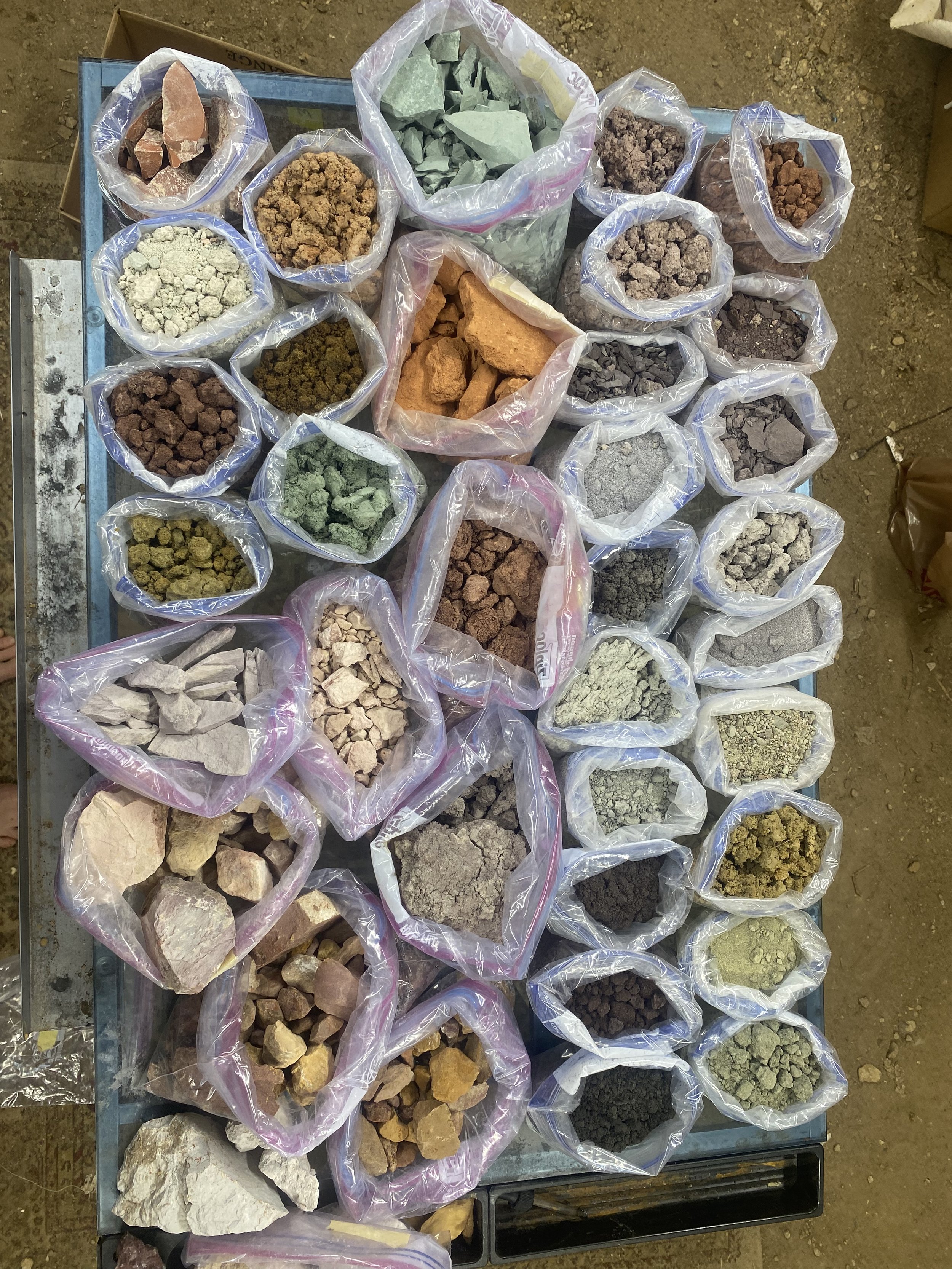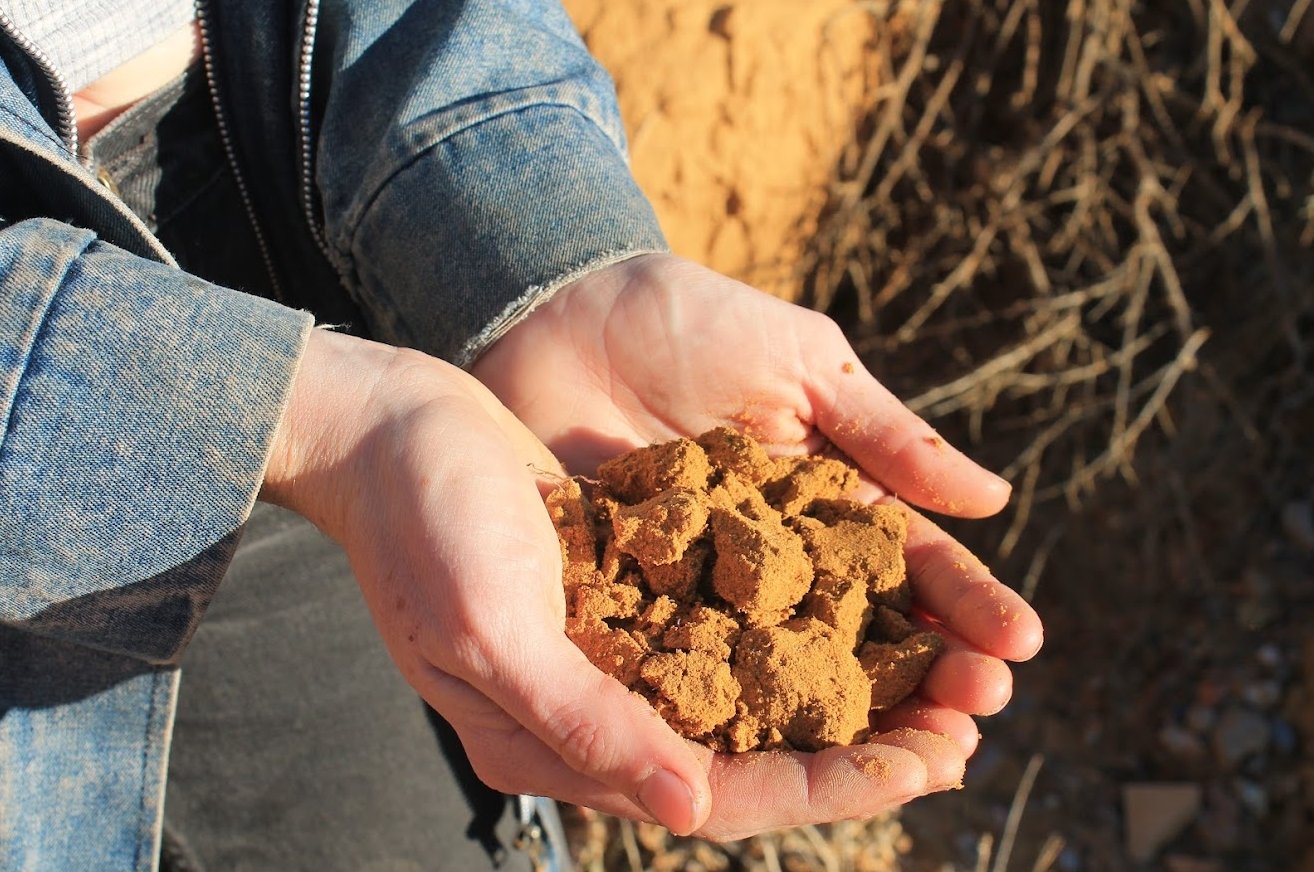
PIGMENTS
Hand-collected soils and rocks refined into fine arts pigments in a home studio in Taos, New Mexico
Pigments are useful in many applications and are all around us. They are responsible for the color of our clothes, the wood stains on our tables, the paints on our walls, and even the black of car tires. But pigments come from a large variety of sources, both synthetic and natural. Not all “synthetic” pigments are bad and not all “natural” pigments are good! They can come from plants, minerals, insects, bacteria, and many different chemicals.
Mineral pigments are the fine, colorful particles in soils, rocks, and clay. Various elements are responsible for the color in pigments. For example, iron oxide (Fe2O3), or Hematite, is responsible for red hues and is made up of two of the most abundant elements on earth. The materials which contain a desired color can be processed and refined to make paint.
.
What are “Pigments”?

Human as a Mechanical Weathering Force
A look into the process of gathering, crushing, sifting, mulling and working with soils, rocks, and other mineral sources of pigments
Scout for Colors (and Research)
Colors can be seen through a car window on roadcuts, or during a hike through the high desert here in Northern New Mexico on hillsides, anthills and dry waterbeds. They can also be found in areas where mining operations were digging deep into the ground and exposing or displacing colorful material from deep inside the crust of the earth. Careful consideration is given to the history of the place where these minerals are found. Is there toxic waste or hazardous minerals (Lead, Arsenic, Asbestos, etc.)? Who were the original inhabitants? Did they work with the colors in the land or consider them too precious/dangerous to touch? I’m not always proficient at asking or finding the answers to these questions.
The rough material is gathered in handfuls, packaged, and labeled with the location, date, and sometimes other context. I find it is unnecessary and even rash to take more than what is needed.
The process of respecting the intelligence of nature starts with the very first look/thought/interaction.
2. Process/Refine/Transform
The materials are taken back to my home studio to be processed. If the material is in rock-like form, it has to be crushed with a stone mortar and pestle. If it is really firm (i.e. high clay content), it may need to go through a grain mill to be ground further. Then it can be refined through a dry or a wet process. The dry process includes sifting the material through a fine mesh screen (and requires a mask to reduce the inhalation of particles), while the wet process includes mixing the material in a jar of water, allowing the large particles to settle, and then pouring off the finer material that is suspended in the water into a coffee filter. Once dry again, this can be crushed again with the mortar and pestle. The purpose of this process is to isolate the smallest particle sizes, which are most ideal for fine arts purposes.




